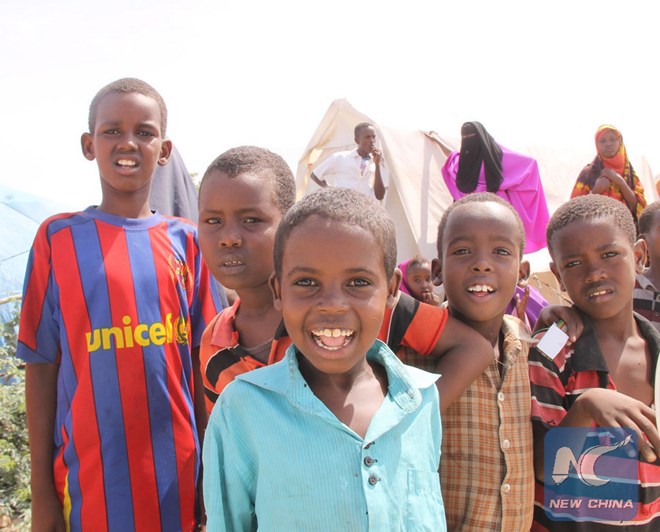
Saturday, December 03, 2016

Displaced children at a camp in Mogadishu, capital of Somalia, June 20, 2012. After two decades of persistent conflict, drought and famine Somalia has the biggest number of displaced people in the world . The World International Refugee Day was marked today with various activities. (Xinhua/Faisal Isse)
MOGADISHU, Dec. 3 (Xinhua) -- Some 38 aid agencies have said that at least five million Somalis are facing acute food security crisis due to poor rains in the Horn of Africa nation.
In a joint statement early this week, the agencies include Oxfam, Relief International and World Vision said vegetation conditions have worsened and drought conditions intensified and continued to affect pasture, water, livestock and crops.
"All actors involved need to immediately react to the situation by responding to calls for aid from the humanitarian actors operating in Somalia to ensure that the communities in the affected regions are given lifesaving humanitarian assistance," it said in a joint statement received in Mogadishu.
The Horn of Africa nation is currently undergoing a drought that has put a severe strain on a large number of livelihoods.
Poor April-June rains coupled with poor October-December rainfall prospects have led to worsening of food insecurity situation and efforts to reduce levels of vulnerabilities continue to be undermined by irregular weather patterns.
According to the FAO-managed Food Security and Nutrition Analysis Unit (FSNAU) and the Famine Early Warning Systems Network (FEWSNET), more than 1.1 million people cannot meet their daily food requirements, while another 3.9 million Somalis require livelihood support to reduce the risk of sliding into crisis.
According to the agencies, severe drought in semi-autonomous region of Puntland is directly affecting approximately 150,000 people and has displaced an additional 12,000 people, according to an inter-agency assessment conducted in September.
"Food prices have gone up and some have doubled which in retrospect places the vulnerable populations are in dire need. Pastoral households interviewed reported that they trek an average distance of 60 km to access water points for both human and livestock consumption," the agencies said.
In Somaliland, The FSNAU and the Famine Early Warning Systems Network (FEWSNET) reported in September that 31 percent of the population, or more than one million people, will be in need of humanitarian assistance in Somaliland until the end of 2016. Acute malnutrition has worsened and 248,000 people face acute food security crisis.
An estimated 89 percent of the pastoralists have lost at least one animal, while 77 percent of animal deaths are attributed to the drought.
According to the agencies, while access in Lower and Middle Juba Regions restricts information, satellite-monitored rainfall trends show the regions to be the most worrying in all of Somalia.